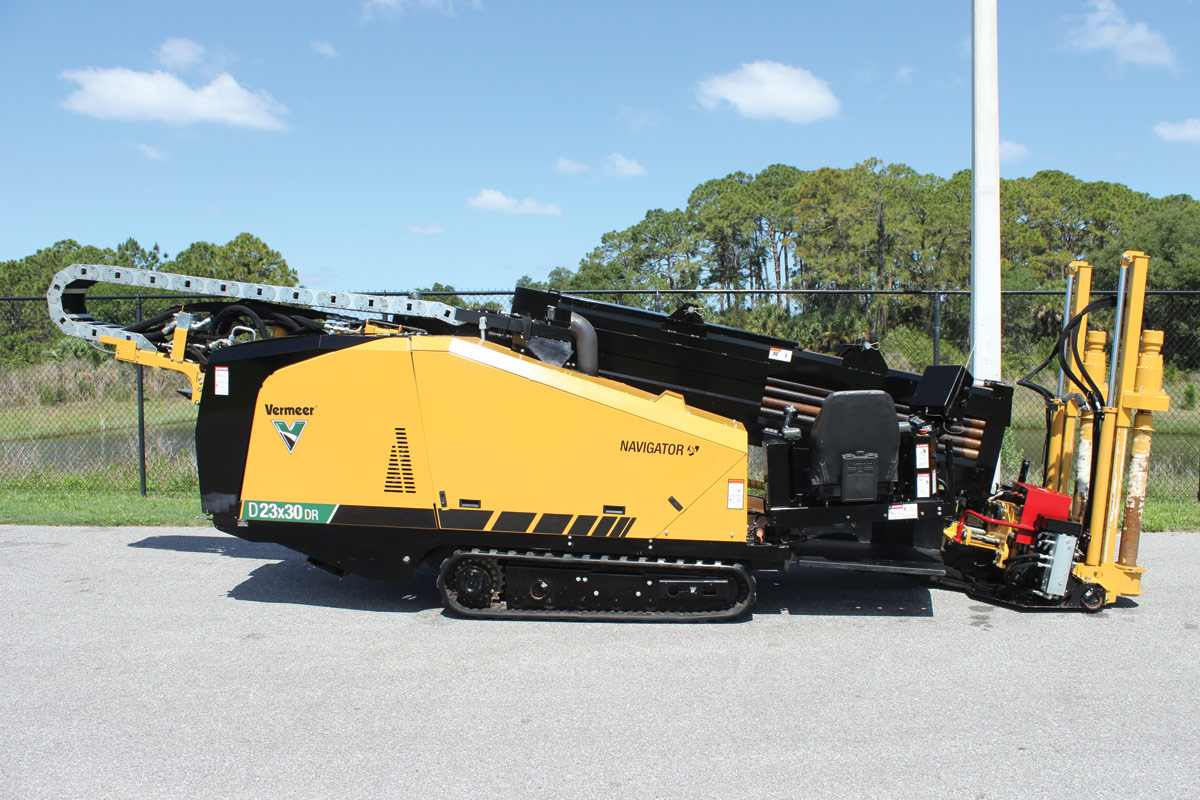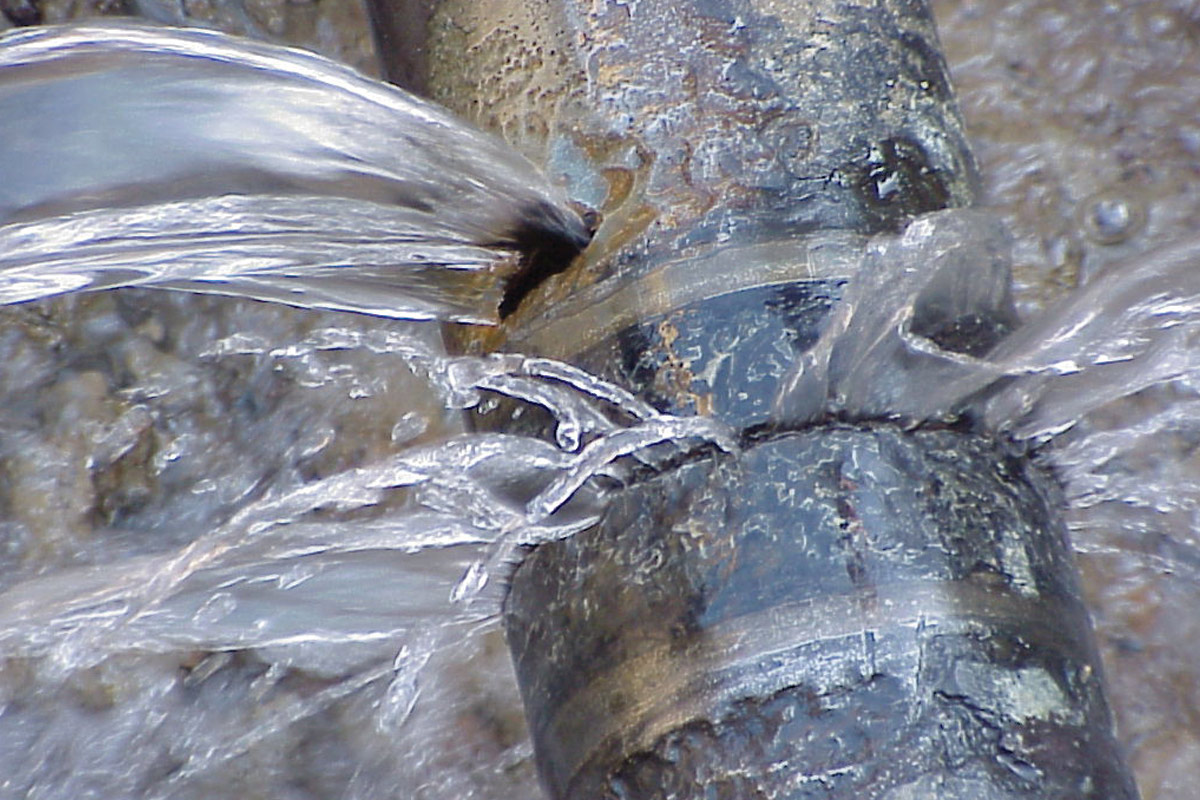
Trenchless Flashback: Editorial Forum Roundtable Discussion – The Owner’s Perspective
July 7, 2017
Cities across North America are engaged in a perpetual cycle of infrastructure construction, maintenance and rehabilitation. With many changes in tools and technology, as well as rules and regulations, Trenchless Technology conducted a roundtable discussion involving municipal representatives from across North America to find out firsthand what these cities are doing.The roundtable, held April 30 at the Palais de Congres in Montreal in conjunction with the NASTT No-Dig Show, included:
This article originally appeared 15 years ago in the July 2002 issue of Trenchless Technology. As we are celebrating our 25th anniversary, we’re going back and posting a variety of articles from past issues. Checkout a PDF of the original story at the end of this post.
JOSEPH BECKER, Sewerage and Water Board of New Orleans
KEN CHUA, City of Edmonton, Alberta
EUGENIA CHUSID, City of Santa Monica, Calif.
MICHAEL WILLMETS, City of Ottawa
JAMES RUSH, Editor, Trenchless Technology
James Rush: Can you give an update of what’s happening in your city? What are the major issues you are facing? Treatment? Maintenance? Rehab? New construction?
Joseph Becker: The Sewerage and Water Board of New Orleans has embarked on a $500 million rehabilitation program for the sewage collection system. It’s an aging system, with a large percentage of our pipes in excess of 80 years old. The City is relatively flat and has very poor soil conditions. This results in abnormally high rates of subsidence. The City is fairly compact and these tight physical constraints make it difficult to perform excavation-type repairs without severe inconvenience to residents, as well as commuters.
In addition, we are just beginning a large project that will rehabilitate the sewage treatment plant that handles 90 percent of our flow. This project will improve the treatment process at the plant and enable us to handle the increased flows anticipated as a result of our collection systems program.
As always, when you take on such large projects in poorer cities, the major challenge we face is funding. Typically, services provided by pipes under the street are taken for granted and sanitary sewers in particular are not an easy subject with which to start a dialogue. Water is a primary need for the preservation of life and a sewer system is a requirement to maintain any sort of quality of life. It takes money to maintain these needed facilities and, hidden underground, they do not receive the public’s attention. We are at a point now where nearly all of our sewer and water facilities have exceeded their design life, and I believe that other cities are in the same situation. Something must be done to identify funding for the rehabilitation and maintenance of these facilities.
Ken Chua: One of the major problems facing the City of Edmonton is CSOs (combined sewer overflows). Although the system is relatively new in terms of age, maybe 50 to 60 years old, it’s the only combined system in the Province of Alberta. We are very fortunate, though, that CSO structures are downstream of the water intake, so they do not have an adverse effect on our drinking water source.
We are in the midst of a long-term CSO abatement program, which includes inline storage for stormwater and opportunistic sewer separation. Like any city in North America, we’re looking at securing funding to help support the CSO and separation work. It’s a great challenge.
Michael Willmets: The City of Ottawa is actually the “new” City of Ottawa. It’s a period of municipal amalgamation and transition into a city of more than 700,000. Previously, we were 11 municipalities under a regional board. That’s meant tremendous change in our community. Just coming to a consensus on how we approach the collection system is a difficult task.
Our treatment plant was recently brought up to state-of-the-art condition through a $400 million program, so now the focus has turned to trunk mains and stormwater control. We’re in the planning stages and deciding what approach will be the most efficient and cost-effective.

For us, the major concern right now is the lateral connections and how to deal with them. – Eugenia Chusid.
Eugenia Chusid: We’re recovering from the Northridge Earthquake in 1994 that damaged 85 percent of our collection system. We started a major rehab program four years ago that is now winding down with just four small projects left.
When we finish that, we will start dealing with the problem of lateral connections, which, of course, everyone has a problem with. It’s just a matter of deciding how we’re going to approach that.
James Rush: What trends or developments have you seen over the past five years?
Michael Willmets: There have been a lot of changes in recent years. The lining of the large sewers has been one of the more interesting developments. Certainly, we look to new technologies, especially no-dig technologies, for repair because you don’t want to be needlessly digging up streets.
We also have lateral rehab programs that are ongoing and quite aggressive. One of the drivers of this is increased bylaw enforcement and restrictions on certain things entering the collection systems.
Ken Chua: We have aggressive planning regarding addressing the combined system, but the funding is not sufficient. More and more, this is becoming a major issue for cities. On the rehab side, we are planning with regard to the critical components of the system so that instead of being reactive, we can take a strategic approach to renewing the aging infrastructures. This renewal involves the coordination with other utilities like roadways, water and power, so that the money can be spent more efficiently.
Joseph Becker: The Sewerage and Water Board of New Orleans is in the middle of an aggressive sewer program. We have inspected over half of our gravity sewer facilities by smoke testing, dye testing and TV inspection, and will complete the inspection of the entire system within the next few years. With the massive inspection and construction assessment being performed, we’ve become even more dependent upon our database to record the work and to track the status of ongoing work, as well as work that is scheduled. We’ve had to develop ways to standardize our inspections and actively sought out new technologies, such as sonar inspections, to perform in areas where more traditional methods have been unsuccessful.
We have also developed a sewer model and a GIS system and are currently developing models for both our drainage and water systems. The development and calibration of these models enabled us to learn a lot about our system and forced us to correct some assumptions that we held.
Eugenia Chusid: Prior to the earthquake, Santa Monica used to do inspection here and there, and do somewhere between $1.5 million and $2 million in rehab a year. But after the earthquake, we kind of took apart the process and began to develop a comprehensive inspection and repair program. We found out that much of the system needed repair or replacement and also that 45 percent of our system was undersized. So instead of taking a band-aid approach and fixing whatever we could, we developed a comprehensive plan.
As far as new products, we’ve used different lining approaches. During the last four years we’ve been using spirally wound pipe. We have more than 320,000 ft of that product in our system and it’s worked out well for us.
One of the biggest changes for us has been the construction of a water recycling plant, which is one of the first in the country, to reuse water for irrigation.
James Rush: What kind of an effect do government regulations have on the way municipal collection systems operate, particularly with the respect to CMOM and GASB 34 in the United States?
Michael Willmets: Bylaw enforcement is a big driver in rehab. There are provincial standards that we must adhere to. In fact, to construct sewer or water facilities, we need a Certificate of Approval from the province. Standards have flexibility for specific areas based on climate, soil conditions and other geotechnical variations.
Again, with municipal amalgamation, we are faced with the daunting task of bringing many local standards together into one document.
Joseph Becker: GASB 34 is more of a financial regulation, while CMOM emphasizes the maintenance practices of a utility, although both are closely tied. Both of these regulations will force municipalities to emphasize asset management. I think utilities, large or small, that have done a good job of recording historical information on their system and have kept that information up to date, will be positively affected by the new regulations.
Eugenia Chusid: That’s not really a problem in Santa Monica because most of the system is being completely redone. We have all the information on our assets. We have all the videotapes and as-built information, but we’re just in the beginning stages For us, the major concern right now is the lateral connections and how to deal with them. Getting funding to deal with laterals is a big issue for us and also a big political issue because in 95 percent of the municipalities in the Los Angeles area, the lateral connection belongs to the property owners. So how do you deal with this political issue? And, will you have to add maintenance staff if you take over the laterals? There are a lot of questions.
James Rush: Are there similar problems with laterals in other areas?
Joseph Becker: We have a large problem with laterals. A lot of our residents don’t have the money to repair the facilities on their side of the property, and that’s a major source of inflow for us. And that eventually comes back to us and we wind up paying at the plant. So, it’s definitely in our best interests to find a way to be able to take care of I/I from the laterals, and right now we’re struggling to find ways to either address the problem ourselves or have residents address it.
Michael Willmets: What confuses this issue in Ottawa is the different philosophies of the former sewer boards. But it’s all economics. If you want less flow to your plant, you have to do something about it. In older areas, it’s a significant problem. It’s the same evil scenario: the municipality owns the lateral to the property line, but many of the problems are on private property. Plus, it’s not just the sewer lateral as we are commonly in the same trench with water.
This is where investment in alternative methods pays off. Digging on private property can cause major problems with building foundations or landscaping features, which can lead to unwanted litigations. So, trenchless technologies are the route to take. You excavate in the municipal right of way and use a trenchless technology to rehabilitate laterals — for both water and sewer. It gets a little more difficult in areas where there is rock, but there are many technologies out there and more are coming. I think that’s the route we have to take to get the best bang for our buck.
James Rush: What about the idea of using sewers to house fiber-optic cable?
Eugenia Chusid: We were looking at that concept. It’s a great idea because sewers provide access in all areas, but one of the problems we had was that we don’t have a standard set of laterals coming into the sewer line — so you can have a tee or a wye and it can be in any location. And, can you afford to reduce the area of the existing pipe? Another question is how it will obstruct the flow.
If you have steep sewers, that may not be a problem, but in our case, we have very flat sewers and obstructing the flows can become a problem. Then there’s the question of how do you deal with the maintenance. These questions need to be answered before we can seriously consider it.
Michael Willmets: The operational issues are relatively obvious to anyone who has ever been down a sewer — it’s not a good idea. It’s a good idea in the sense that it won’t add another utility to an already crowded right of way, but I think a lot of people are looking at it as a revenue source. And in the long run, it may backfire on the owner.
I’m intrigued by the aspects of health and safety and the associated liability with workers. If a fiber-optics employee is injured in a municipal sewer, who is liable? No one wants to talk about that. I’ve had people hurt on city property and lawsuits go on forever and the city generally loses.
Ken Chua: We’re trying to stretch the dollar as far as possible, so if there are cost-effective ways and innovative ways of doing things Edmonton always has an open door. The design for the sewer is to convey the wastewater and now there’s another objective: to transmit data and information. Now we have to look at how we have to address this in terms of repair and maintenance issues, legal issues, worker safety issues, etc., but we shall not shut our doors to innovative ideas.
Joseph Becker: Some municipalities are enamored with the possibilities of the funding that they can get by allowing the use of their facilities. We have to remember that the primary use of a facility is the transporting of the sewage from the residences or businesses to the treatment plant, and nothing that gets in the way of that function can be allowed.
There are several issues that need to be addressed — maintenance is one of them, litigation is another. Even if the fiber optics take up only 1 percent of the area, what kind of liability do I face if there are overflows and I’m using that 1 percent for resources dedicated to something other than the primary function? That’s a big concern for us. TT
Enjoy this recap? Follow this link to see how the story appeared in print.
Tags: Mike Willmets, roundtable







